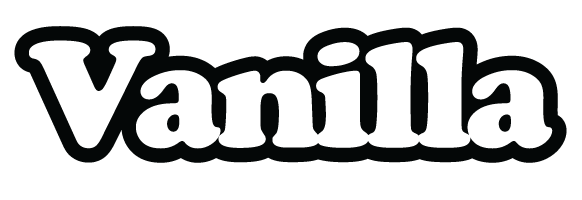Anh Dao is a young American-Vietnamese designer. Anh’s work is dynamic and changing, often responding to what the industry demands. As a designer Anh often explores juxtaposition, soft and rough, delicate, and structured. A talented artist and innovative thinker, Anh is one to watch in the fashion space. Anh was kind enough to chat with us about his journey into the fashion industry and his work.
I’d love to know more about the journey of how you found yourself in fashion. What inspired you to follow this career path?
My journey to fashion was not a smooth ride. I did not have a lot of support from my folks at the beginning as fashion, to them, is something of the extreme, a territory no one that they know of ever ventures. However, since I was little, I have known I wanted to work in fashion when I grew up. I recall one of my first memory around the age of 5 or 6, back when I was still in Vietnam. I think it was a Pierre Cardin show. It was a significant event because it was the first time a world-famous designer held a fashion show in Saigon. Unfortunately, I didn’t get to see the show. There were no internet, live-streaming, or photos available to be shared right away like nowadays. However, I still remember the excitement and anticipation of the crowd awaiting to see all his beautiful, avant-garde creations in preparation for the show. That’s when I determined to become a fashion designer. I want to live on, feed on that energy, that rush, that creativity. It’s what makes me feel alive.
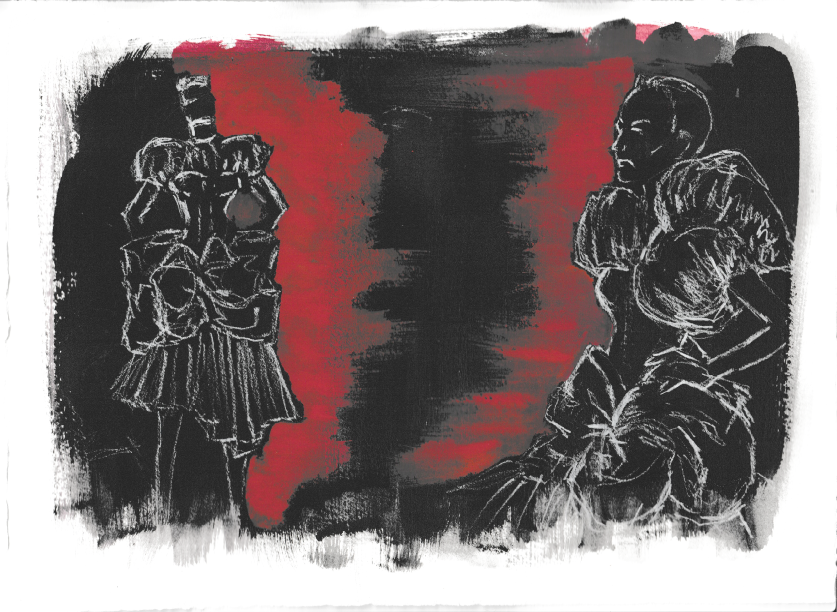
Your artwork is incredible, how do you find you art influences your design?
Thank you for your compliment. For me, art is not only an expression of oneself. I think of it as an instrument to find inspiration. I often find myself being inspired by other artists and, occasionally, my old artworks. I keep my favorite artworks from museum and gallery visits and my works digitalized. Whenever I need to renew my inspiration, I scroll through them and take notes. Painting, drawing, and doing prints can sometimes lead to discovering new techniques that apply to fashion and vice versa.
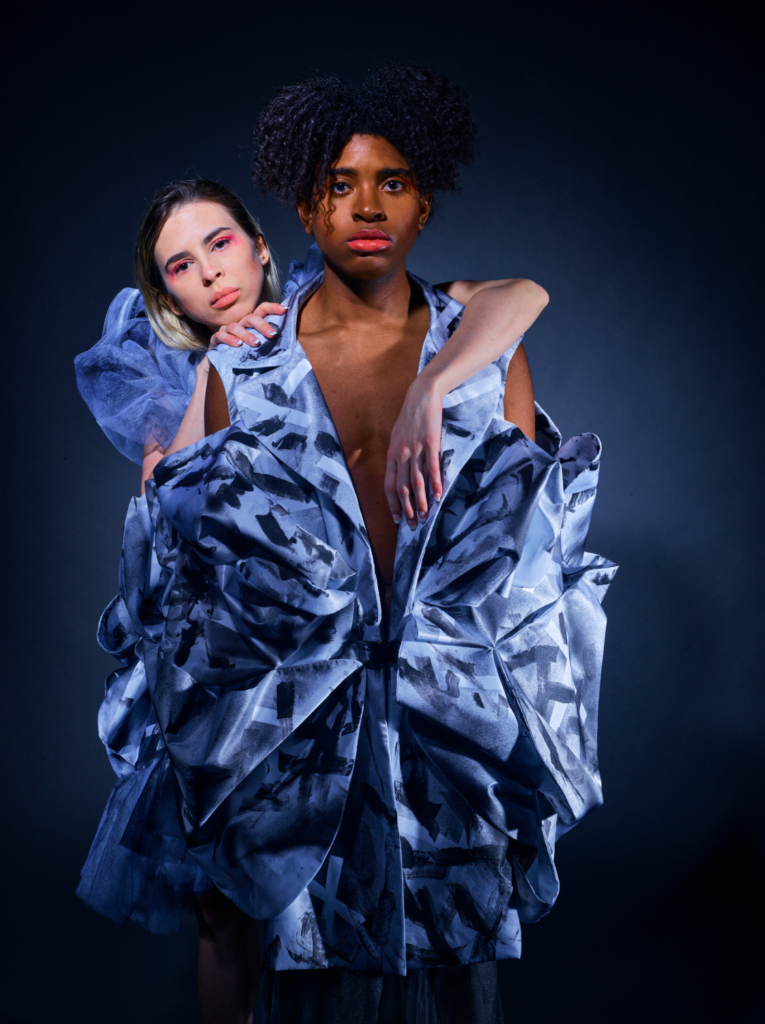
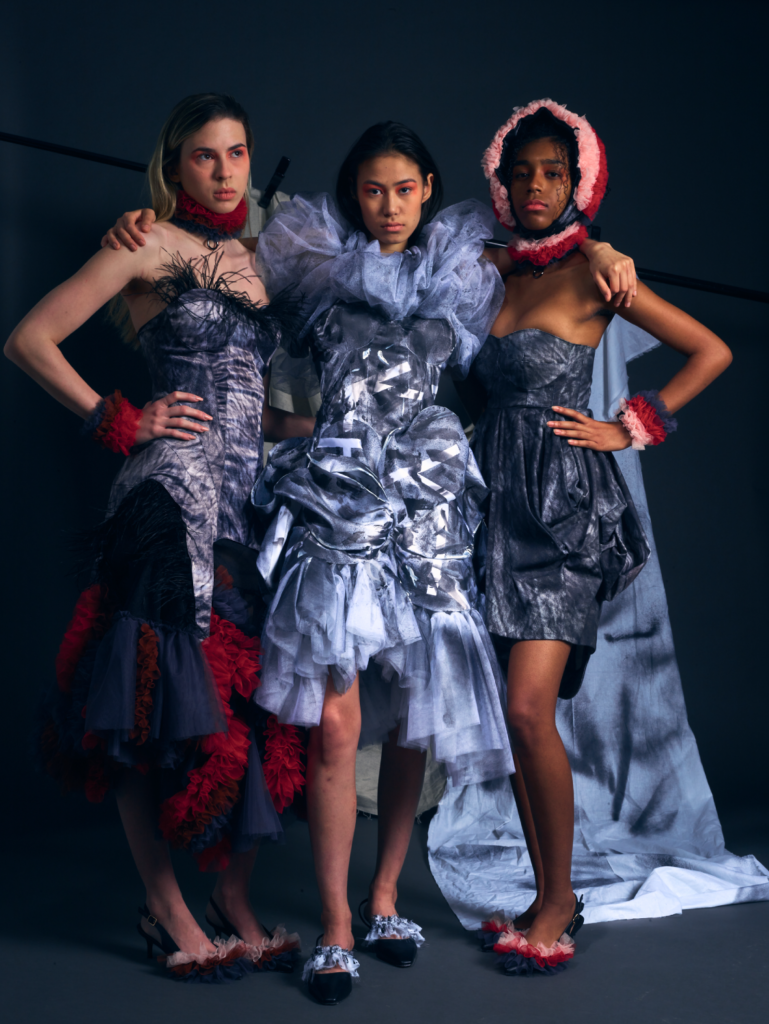
Do you see yourself as an artist first or a designer first?
To me, those terms are interchangeable. An artist is a designer, and a designer is also an artist. It doesn’t feel right for me to label myself as one or the other because I think that would limit my capability and potential in a direction. In both professions, we all try to push our limitations and expand the boundaries of what is acceptable, which society forcefully placed on us. As artists or designers, our job is to motivate and connect with people by telling the stories of who we are, what we are, where we are from, and why we are doing this. In that way, both professions are very much alike. We exist to inspire and to make the world a less suffering place.
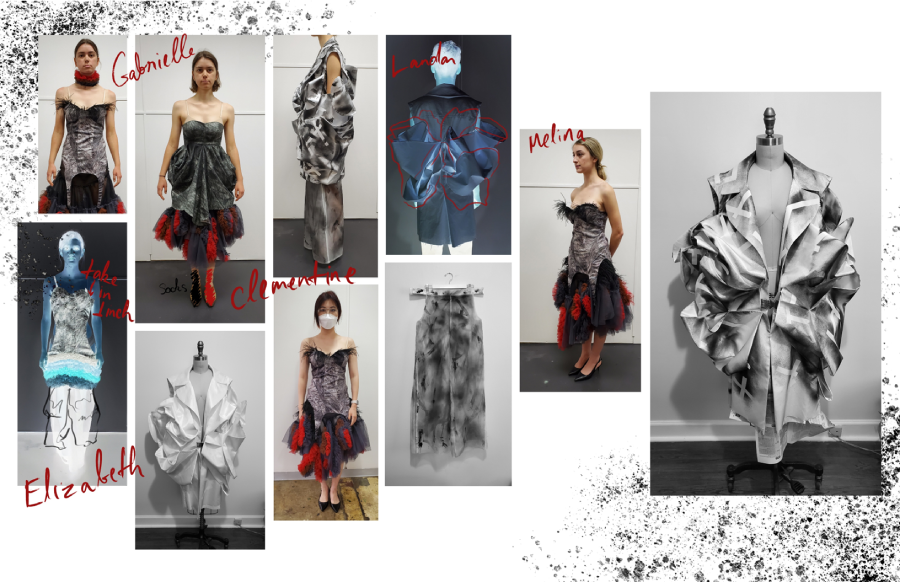
How do textiles influence your designs? I can see that a lot of your work juxtaposes soft fabrics on strong architectural silhouettes. How do you find this translates into real life when you are creating your sketches in 3D?
As the human body can only take on so many forms, I believe textile is the creative direction of the future. As technology evolves, we see new materials and techniques being used. Some of them support the creation of new silhouettes. For my collection, I wanted to use those standard eveningwear fabrics such as satin, tulle, and organza in a way that feels unusual and contemporary. As the juxtaposition of the delicate femininity and the solid concrete architectural form is my main inspiration, the fabric choices and textile manipulations also reflect that theme. When recreating the first drape in 3D with actual fabrics, is trial and error. Fortunately, I experimented with various combinations of materials in small swatches earlier in the process, so I know which would work well on a larger scale before moving forward. I’d also been experimenting with the CLO 3D program, which helped me with the patterning process and saved a lot of time and materials.
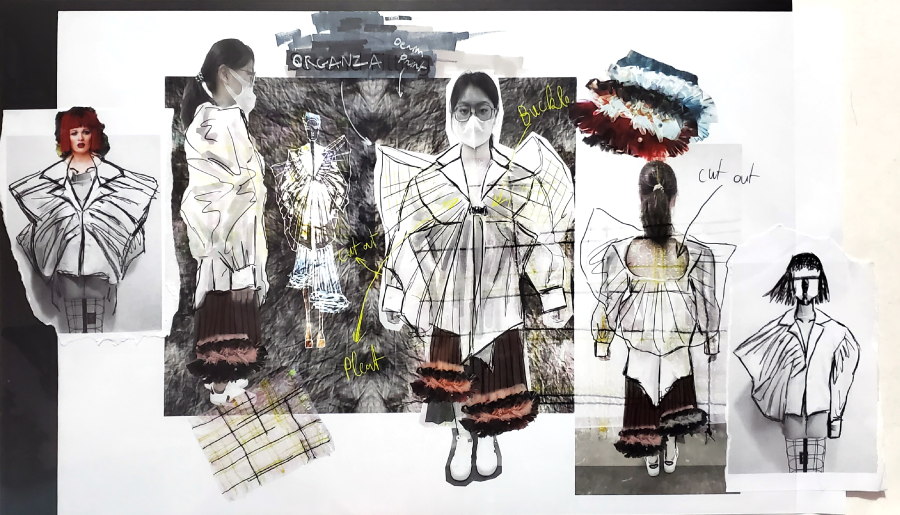
Has your upbringing and background influenced you approach to fashion and art? How do you experiences shape your work?
Growing up, I didn’t have a lot of support to follow a fashion or art profession because, to my working-class family, an art or design profession isn’t a job that can generate income, and those jobs are only reserved for the upper class, who has more privileges. Of course, I didn’t know anybody that works in the fashion or art industry to show me the ropes either. My mom used to take jobs from local boutique shops, which needed a few detailing works such as creating buttonholes or fixing hemlines as an extra income source. I learned hand-sewing from watching her work. I used to make little doll outfits from scrap leftover fabrics. That is one of my first self-taught lessons about garment construction.
When we moved to the US in 2014, I wanted to continue my training as a fashion design major. Unfortunately, no school in the state offered the program. Due to financial restrictions, I decided to live close to my family. I took on a community fine art program instead to gather enough credits for a transfer while working to save money for tuition. The fine art program taught me much more than I thought it would. It generated my curiosity about the process and the natural world and encouraged me to experiment with new materials and techniques. I found the knowledge I acquired applicable in the art field and helpful in my fashion career.
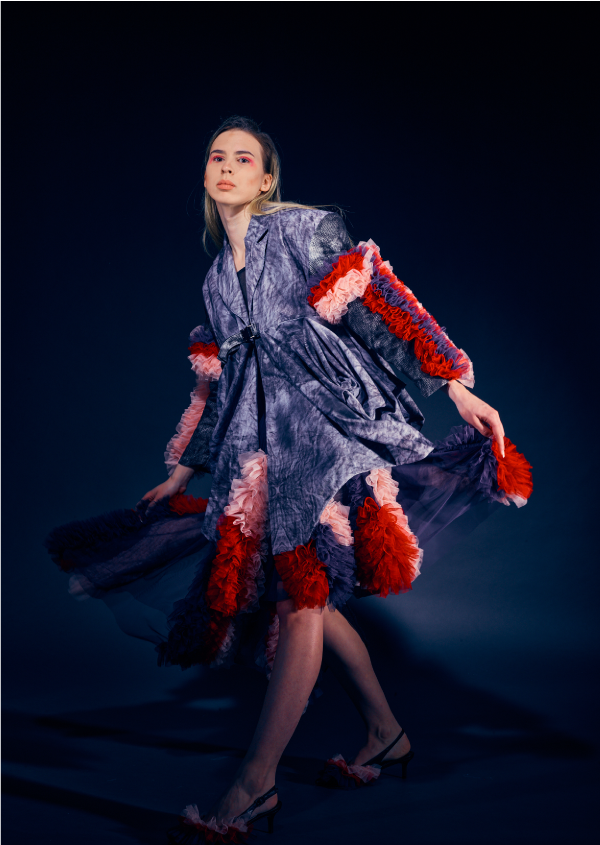
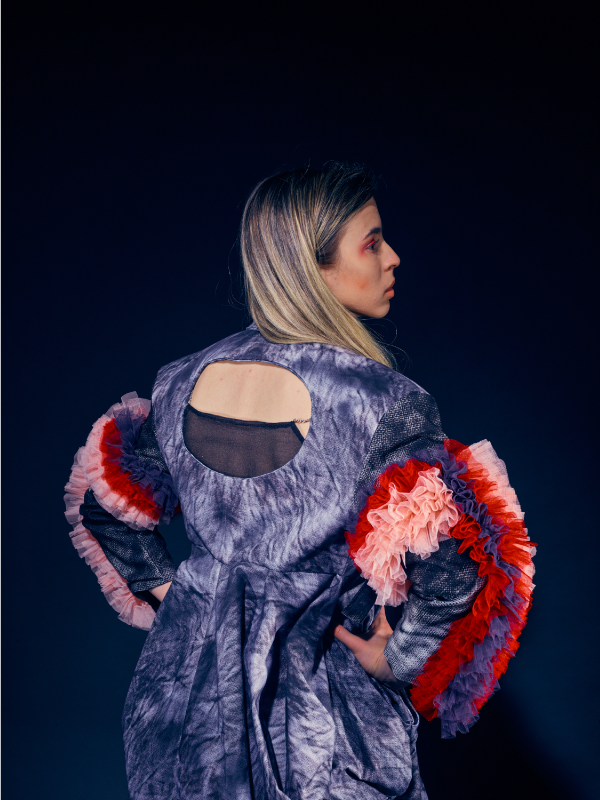
As a young designer navigating your career through this pandemic, how has life changed for you? How has Covid impacted your creative process?
The pandemic came when I was just about to finish my first quarter at SCAD Atlanta. I was thrilled and excited for a new beginning and accomplishment in a new city when everything abruptly closed down. I moved back to my family as the program transitioned into virtual via Zoom. The first couple of quarters through Zoom were challenging as we had to relearn how we study, research, and present our work. The professors also had to familiarize themselves with the new teaching tools. Ordering materials and samples and communicating with vendors took much longer because of the disrupted supply chain. However, all the challenges forced me to grow and adapt. I learned to time managing the arrival of supplies and samples ahead of time to have a bit of maneuver in my schedule. The virtual working and studying environment provided new tools for the creative process. Instead of physically doing collages in my journal, I turned to Photoshop, where I can efficiently produce hundreds in half an hour without any paper waste. I used the CLO 3D program to test my patterns and virtually ‘sewn’ the muslins before moving on to actual fabrics.
But of course, not every technological innovation can replace the feel, the touch of fabrics, the organic movement of lines on the paper, the unique brushstroke that can never be recreated, and the texture of torn paper collages, which is why I prefer to keep a small journal of my most passionate projects along with a more presentable digitalized version of them.
Is there anything you have had to change about the way you work because of the pandemic?
Some habits are entirely altered because of the pandemic. Before the pandemic, I used to keep my research and process works on a board where I could shift them around and make changes physically. When things turned virtual, I had to find a way to present them accordingly. Before, I could turn in things as they are; now, I got to go through an extra step to make them pretty for the screen. But all that process forces me to learn new skill sets and pushes me to be a better designer. I also found that working virtually helps minimize materials’ waste in some parts. It is not much, but I’d love to contribute my effort to limit the fashion industry’s impact on the planet.
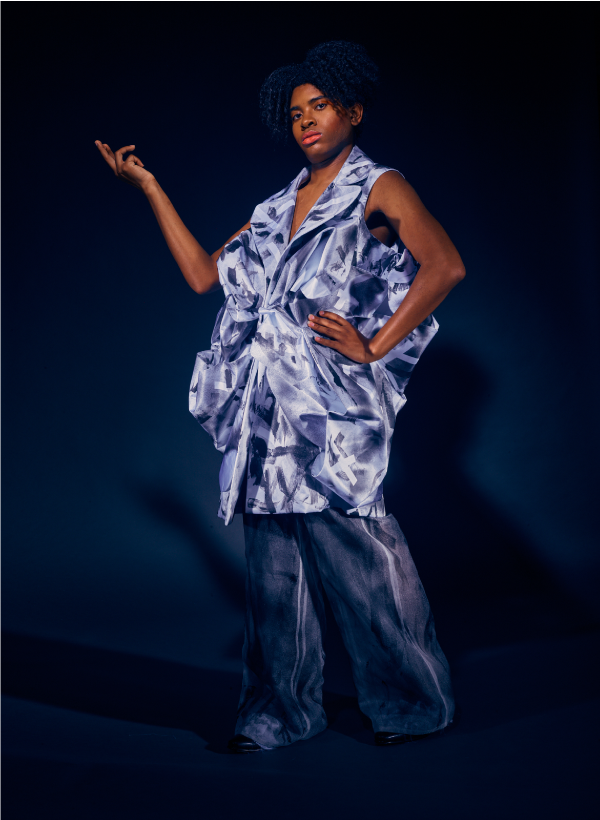
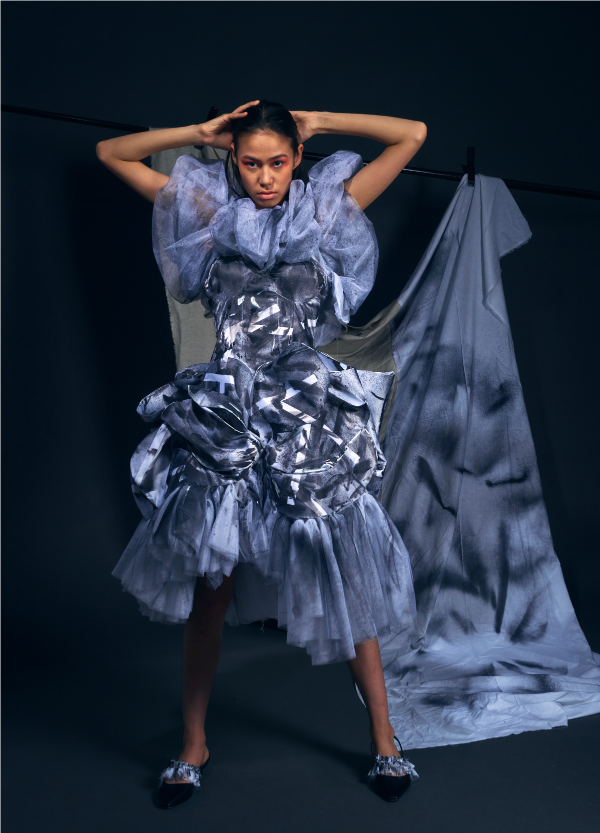
Where do you see your work living? Is your fashion practice more of an art form or do you see your work living in a commercial sense, as a brand?
I believe fashion belongs to a living body. It is clothing, after all, meant to be worn. To me, fashion is the art of living. Costume belongs in a museum; fashion is now. It constantly evolves, is ever-changing, and moves forward. Fashion is an art form in which kindred spirits find each other. One of my old teachers once said people only care about beautiful products, not the inspiration behind them. From a commercial standpoint, I can see where he was coming. However, as I progress professionally, I can’t entirely agree with that sentiment. I want to see my works on a person, moving through the streets, attending her daily activities. At that moment, she expresses herself while I’m making a statement. I believe that is the difference separates high fashion from commercial and elevates it into an art form.
To see more of Anhs work, click here to view their instagram and click here to view their website.

